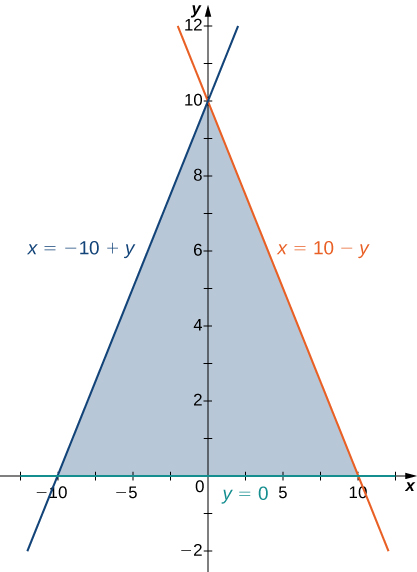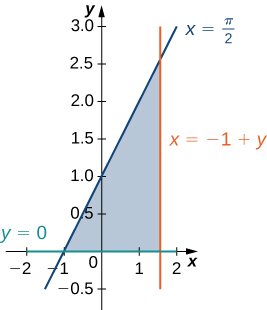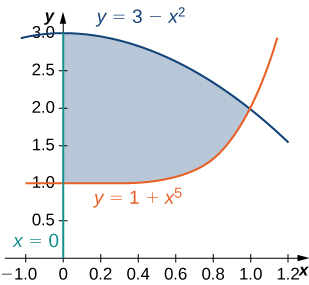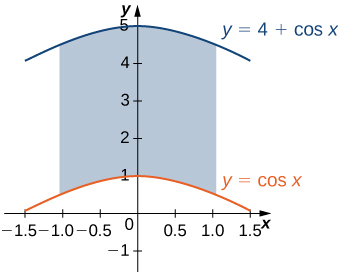| << Chapter < Page | Chapter >> Page > |
The region bounded by as given in the following figure.

Find the volume of the solid under the graph of the function and above the region in the figure from the previous exercise.
The region bounded by as given in the following figure.

The region bounded by and as given in the following figure.

Type I and Type II
Let be the region bounded by the curves of equations and Explain why is neither of Type I nor II.
Let be the region bounded by the curves of equations and and the -axis. Explain why is neither of Type I nor II.
The region is not of Type I: it does not lie between two vertical lines and the graphs of two continuous functions and The region is not of Type II: it does not lie between two horizontal lines and the graphs of two continuous functions and
In the following exercises, evaluate the double integral over the region
and is the triangular region with vertices
Evaluate the iterated integrals.
Let be the region bounded by and the - and -axes.
Let be the region bounded by and the -axis.
a. Answers may vary; b.
Let be the region bounded by and
a. Answers may vary; b.
The region bounded by and is shown in the following figure. Find the area of the region

The region bounded by and is shown in the following figure. Find the area of the region

Find the area of the region
Let be the region bounded by and the -axis. Find the area of the region
Find the average value of the function on the triangular region with vertices and
Find the average value of the function on the triangular region with vertices and
In the following exercises, change the order of integration and evaluate the integral.

Notification Switch
Would you like to follow the 'Calculus volume 3' conversation and receive update notifications?